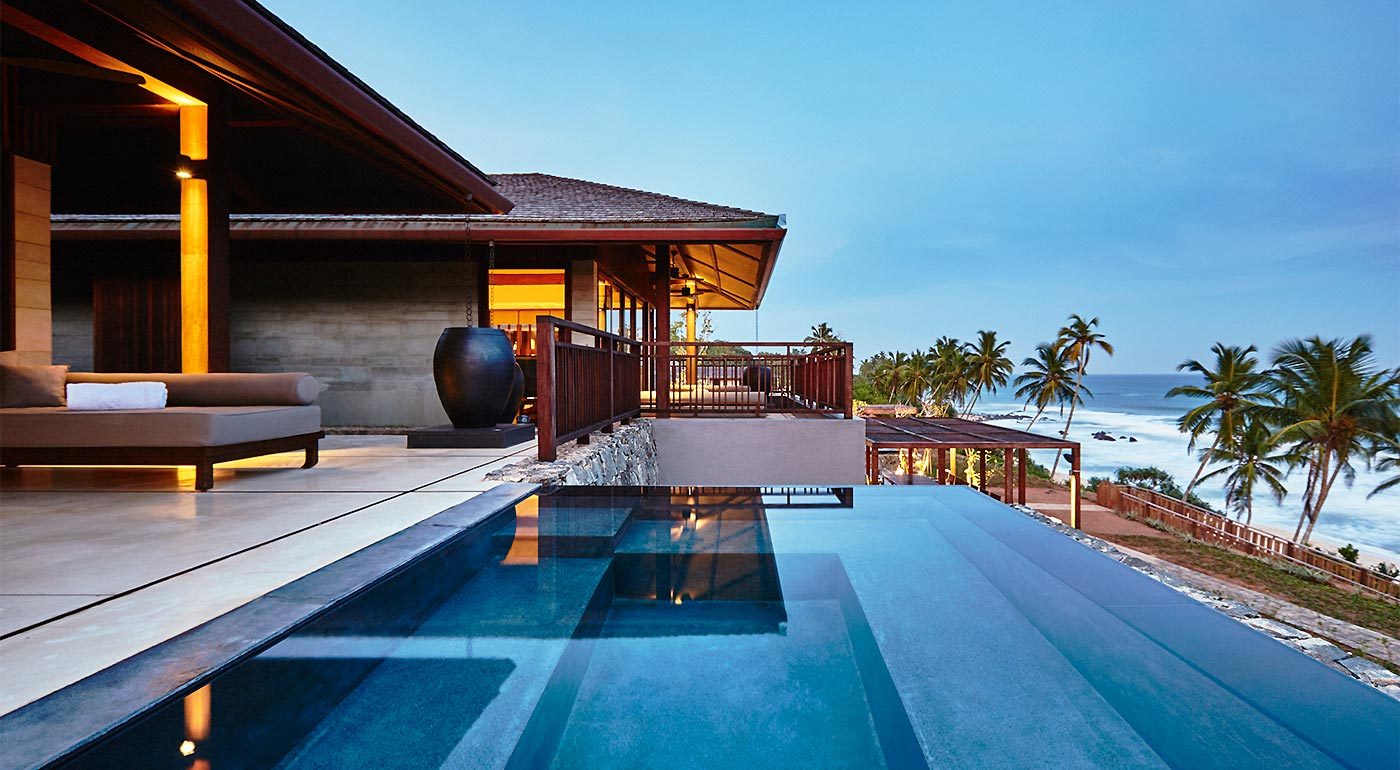
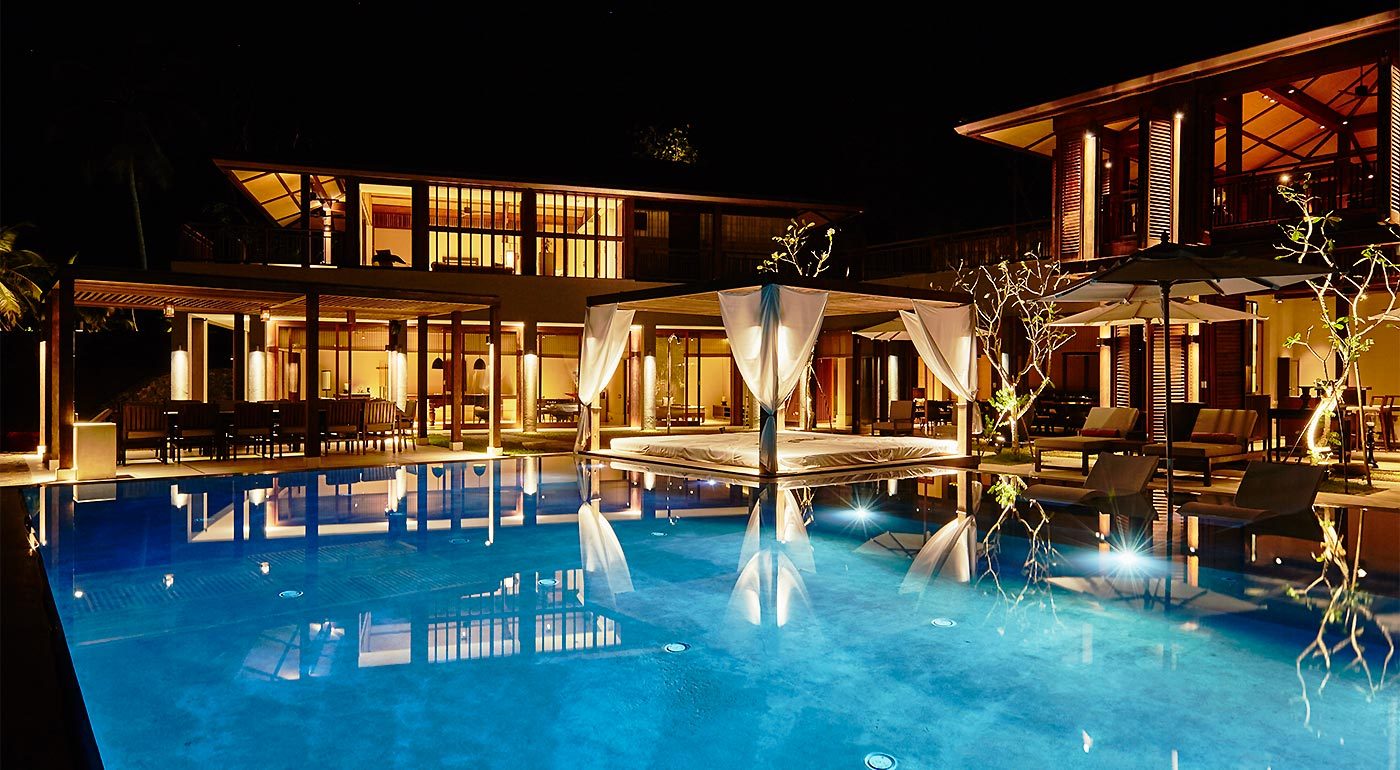
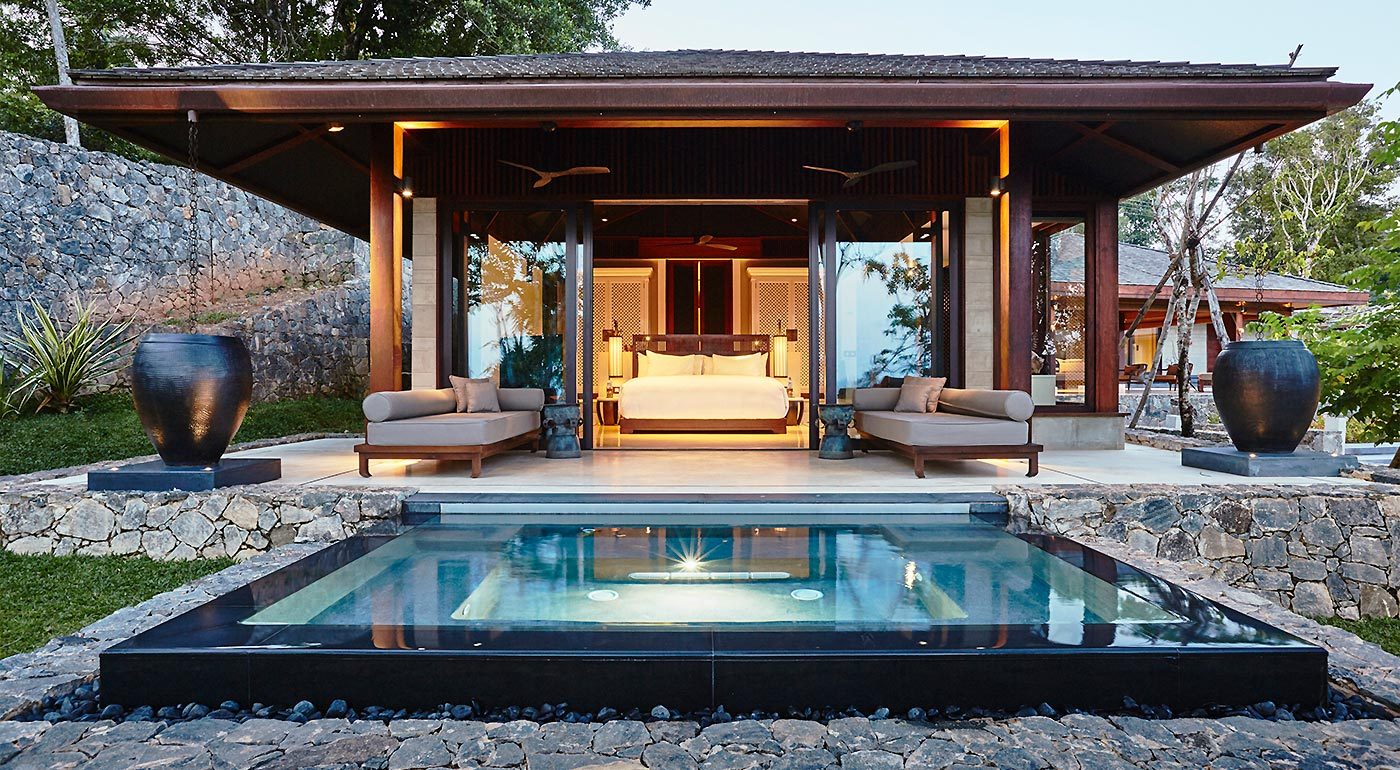




Àni Private Resort and Àni Art Academy are two sides of the same project. The site and the topography were, from the start, a major influence. We had to make the site work with steep slopes while maintaining a low impact on the landscape. The project is organised as a series of clusters. Each one is made up of separate pavilions. The clusters are then linked together with a series of ramps across the site lined in dark stone retaining walls. These create a geometry of walls within the landscape, cutting through the greenery, creating platforms, holding pathways. The stone is present throughout.
The buildings are designed as stand-alone timber frame structures. They sit delicately atop the retaining walls. Each pavilion has a large overhanging roof – in iron wood shingles – that protects and shades the walls and windows. The facades are designed in a strict rhythm of vertical panels, alternating stone and windows for the rooms. The main structures, which house the living areas are built as double height timber frame structures, clad in louvered shutters which allow for natural ventilation – avoiding air conditioning in these areas – and creating a rich play on light at night.
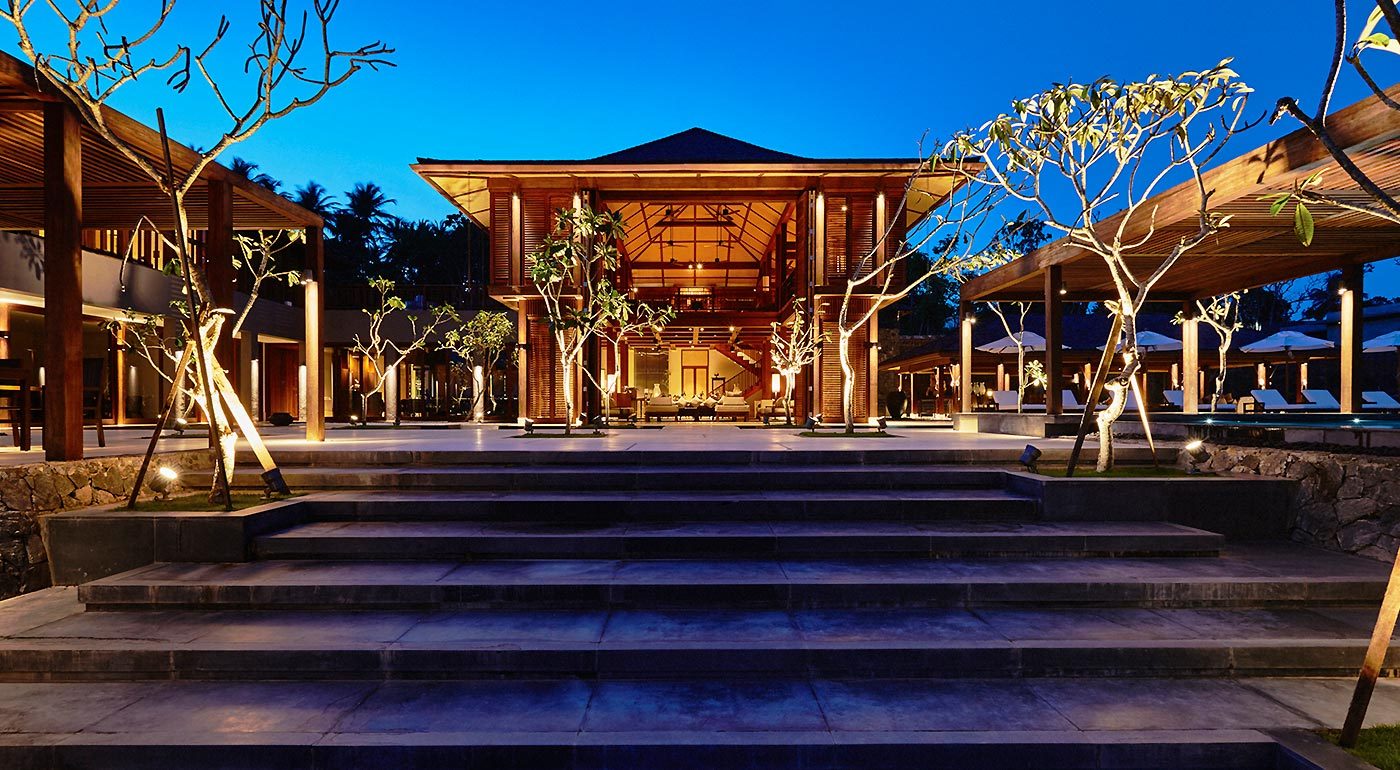
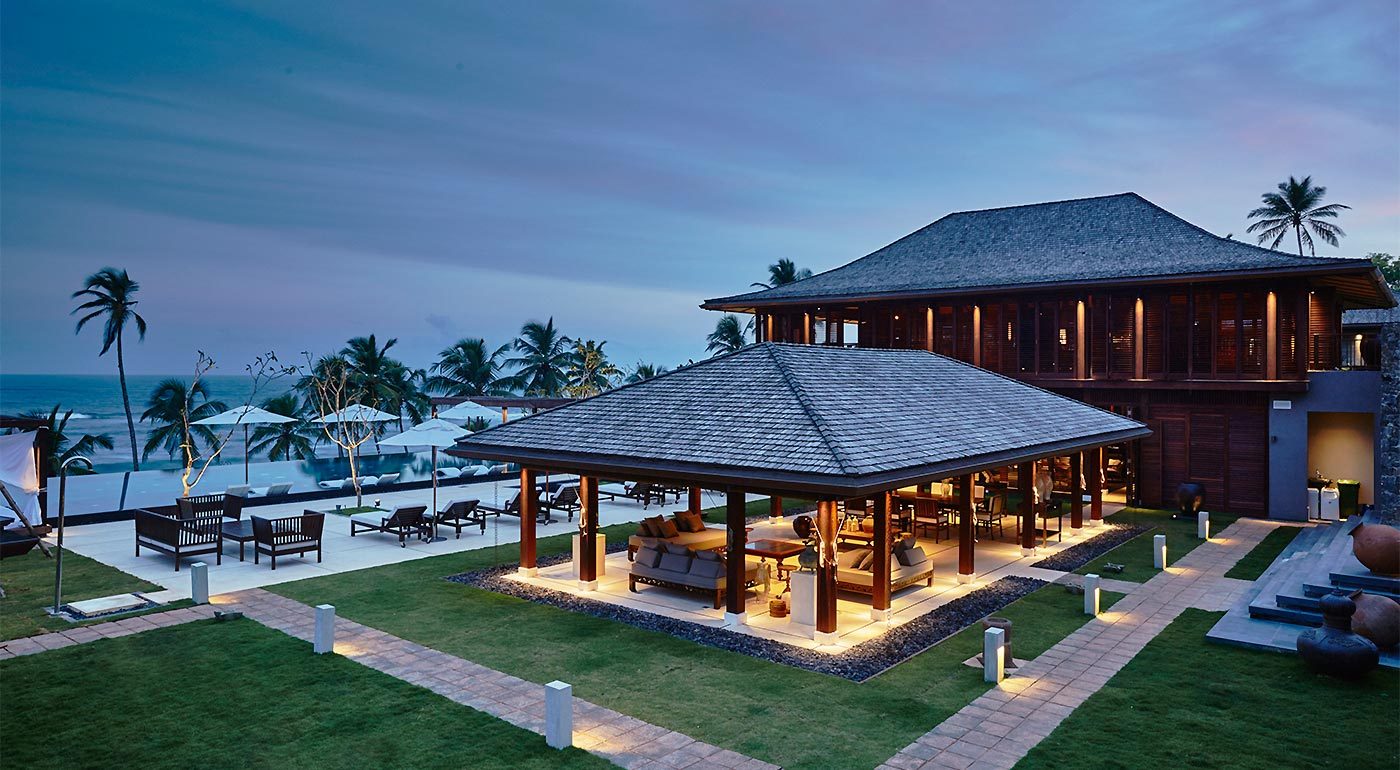
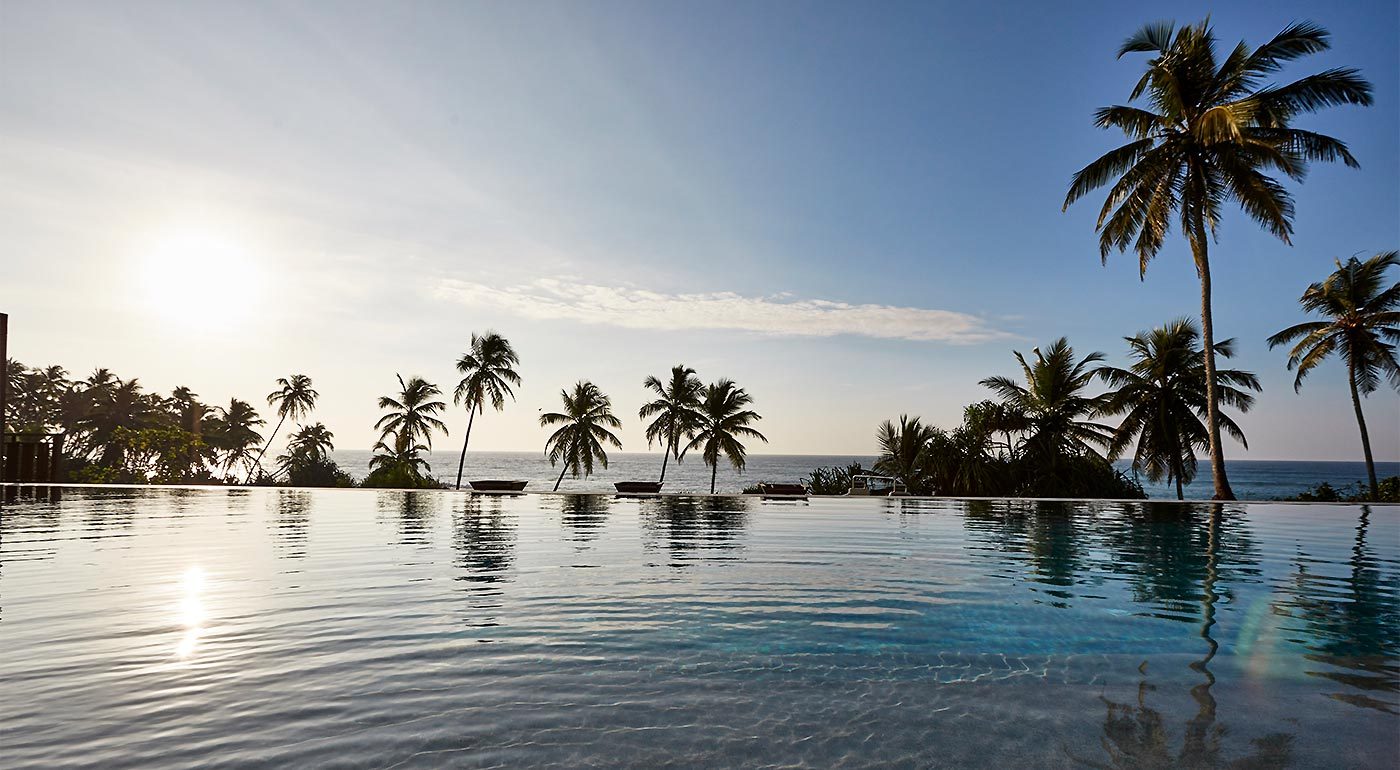

The clusters are all organised to enhance the inside/outside feel. They are designed to extend out, to the terraces, open pavilions, pool decks, and pools. All invite outdoor living, facing the ocean. The landscape was carefully laid out to provide a feel of tropical, lush gardens in some parts and to create more open areas with structured planting, lawns and strong hardscape features, such as the wall fountains or the water path.
We also designed the interiors, where we extended the same idea: create a sense of place, use the local and reinvent our own furniture. Most of the furniture at Àni Villa was designed for the project, giving it a unique feel. The ‘Lanka chair’ was developed for the project. It is probably the most iconic furniture designed there. We searched locally for whatever was not bespoke – furnishings, vintage pieces, and antiques – to give the place a unique dimension. The materials we used for the interiors are a direct extension of the architectural materials, with simple, local materials and natural colours – brown, grey and beige – and strong textures – rough cut stone, flamed granite, soft terrazzo. This again reinforces the coherence we were trying to attain in our design.
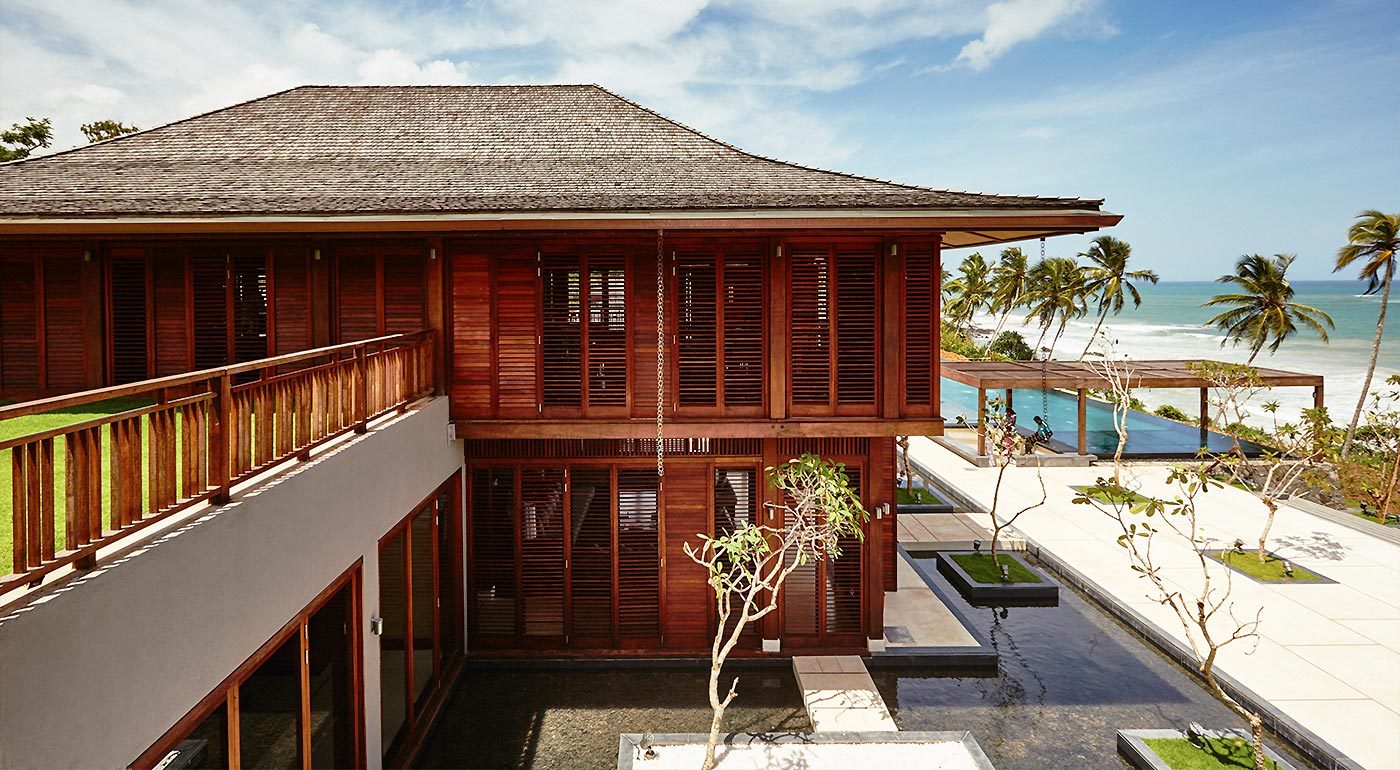
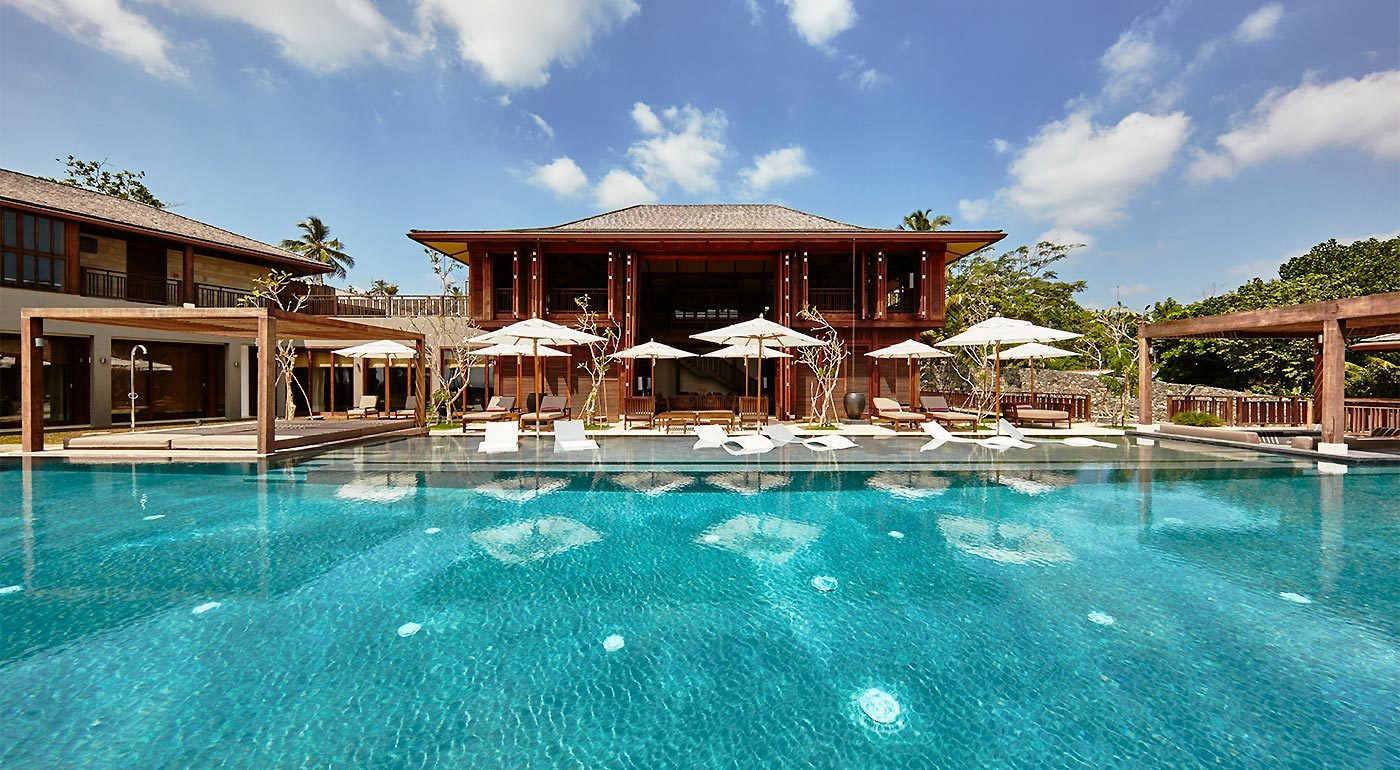
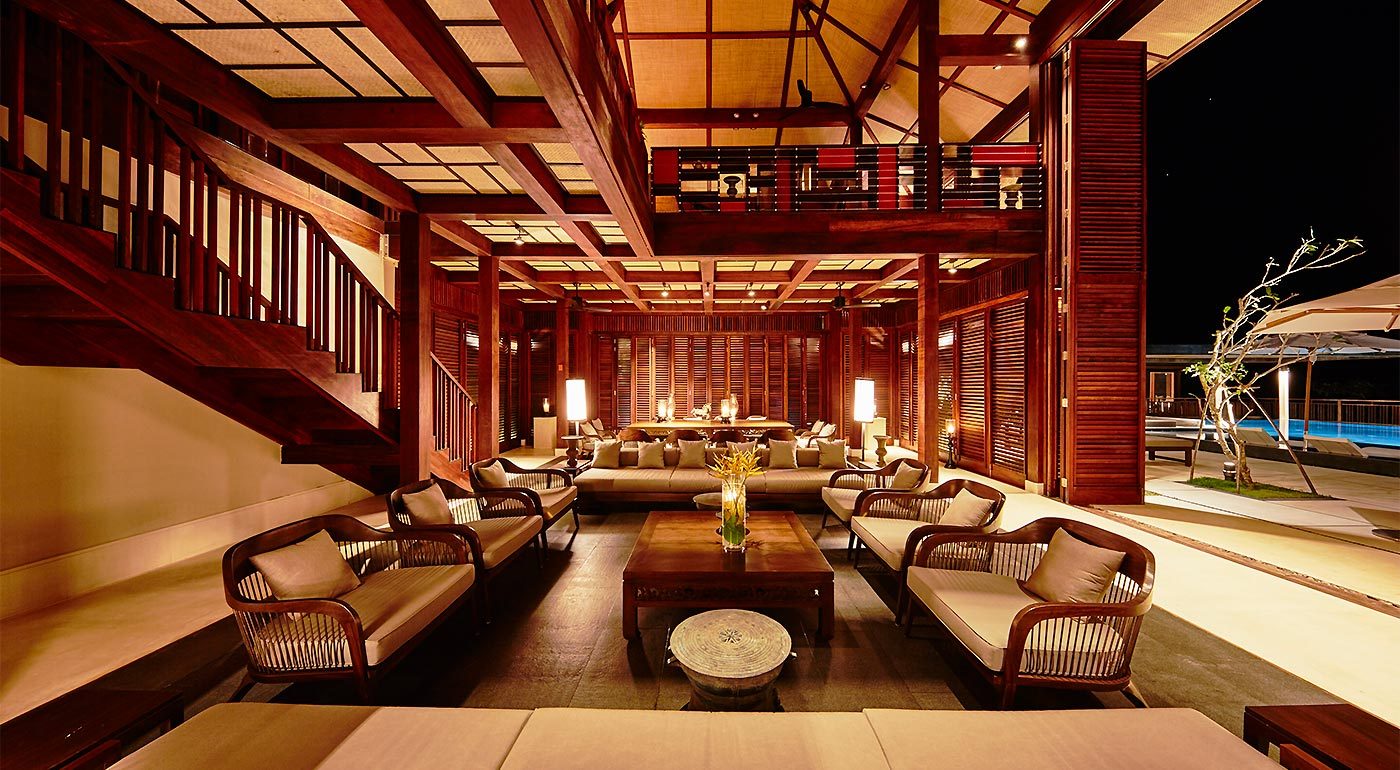

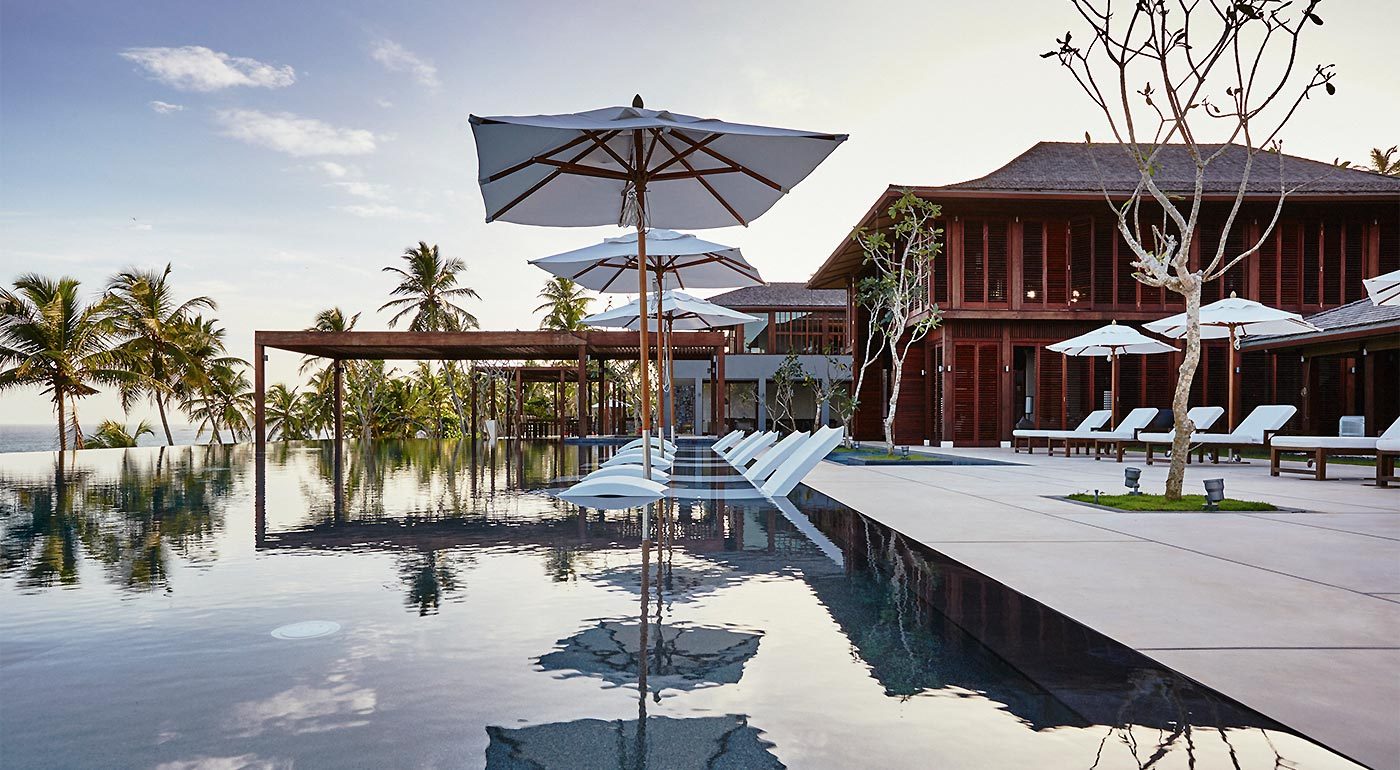
Wheelchair accessibility was another important aspect of the project. Our design ensures full accessibility to all buildings and landscaped areas, whilst remaining invisible to non-disabled users. The difficulty lay in the site itself, its sloping terrain, and the dispersed nature of the resort scattered over 4.5 hectares. Consequently, we had to think about accessibility not as a technical response, but as an architectural choice to ensure that the experience of the place would be the same for everyone.
Hotel villas / ÀNI Private Resort: 3,500 m²
Art School / ÀNI Art Academy: 665 m²
Dikwella, côte sud du Sri Lanka
Photography credit: Mikaël Benard
We are finalists of the MIPIM Awards 2023! Excited to announce that Banyan Tree AlUla has been…
Located in the heart of the Swiss Alps, Six Senses Residences Crans Montana is inscribed in the…
Spaces on Banyan Tree AlUla reflect a modern and elegant style throughout the resort, combing…
On the occasion of the CITHA (Conférence sur l’Investissement Touristique et Hôtelier Africain), held last…
Excited to see Shirvan Métisse Doha featured in FX Magazine latest issue highlighting top recent…
Reda Amalou & Stéphanie Ledoux, and the entire AW² team wish you all a Happy New Year!…
As we are getting closer to the end of 2022, we are excited to look…
Located in St. Moritz, Switzerland, slightly off-centre, Arctic One offers spectacular views of the lake…
We are happy to share Banyan Tree AlUla’s latest media coverage. So far, the resort…
Reda Amalou & Stéphanie Ledoux spoke during EquipHotel 2022 this past November for an afternoon of conferences. Headlining the…
AW² completes Banyan Tree AlUla within the breathtaking landscape of the Ashar valley in Saudi…
AW² designed Surprada to frame the beautiful views of the Flims valley and surrounding mountainous…